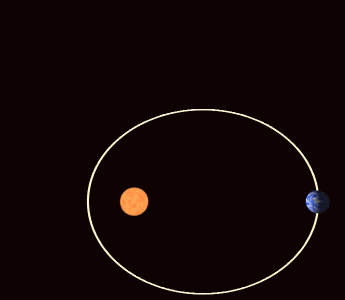“To me there has never been a higher source of earthly honor or distinction than that connected with advances in science.” -Isaac Newton
If Newton truly meant that sentiment, perhaps he would have been happy to find out that his theory of gravitation -- which stood unchallenged for over 200 years -- was superseded a century ago by Einstein's general relativity. Not only did Einstein's theory reproduce all the successful predictions of Newtonian gravity, but where the predictions differed, Einstein's agreed with observations where Newton's did not.
This began with the orbit of Mercury and its observed perihelion precession. But how, exactly, what Newton's theory insufficient? How did Einstein's theory get it right? And what did it take in order to make that leap?
 Image credit: Cetin Bal, retrieved from http://www.zamandayolculuk.com/cetinbal/htmldosya1/RelativityFile.htm.
Image credit: Cetin Bal, retrieved from http://www.zamandayolculuk.com/cetinbal/htmldosya1/RelativityFile.htm.
Find out the answers to these questions and more on this week's Ask Ethan!


It's interesting that this article came about just as I'm reading a book by Lorentz from 1920, about relativity.
When you mentioned proofs (mercury orbit and deflection of light rays).. in his book Lorentz mentions a 3rd one that was expected at that time.. gravitational redshift. But experiments from that time weren't able to detect it. So there was still some reservations if it was complete theory. I think it was only in 60's that gravitational redshift was observed conclusively observed in experiments.
Why is the quantum foam not bent equally around the star thus canceling out the curve?
For example, in the third image there; should the mass of the sun distort equally in all directions thus canceling out any perceived deflection?
Another question, I was watching a documentary on Einstein the other day about his General Relativity and the search for proof with the bending of light around the sun during a solar eclipse.
My question is why such a frantic race to get to a solar eclipse instead of just using filters?
Where Is Wowzer? Something is not right here in Denmark, I have post over 5 hours ago and it has not responded. Could those Syrian Islamic Head Choppers FINALLY got em thanks to the invasion?
Putting a filter over the sun won't make the sky turn dark and let you see the stars.
I learned something so shocking two fake hands came out to rub my eyes.
https://www.youtube.com/watch?v=Kl-CSgoZrzA
I had learned about "elliptical orbits" in school, but I never quite understood them until now. I basically just replaced "ellipse" with "oval" when I thought about it (and always wondered why they didn't just USE the word oval). I knew they weren't perfectly circular, and I knew the planet was closer at some points during orbit than at others. I just assumed that was the natural result of the not-completely-round shape (you know, oval). Those are the words my teachers used to describe them, and those were ALL of the words they used.
Now, thanks to your animations, I'm JUST learning that the sun isn't even in the "middle" of the orbit? It's like, off to one side? THAT'S how they work?! Like less exaggerated versions of comet orbits? I mean, it makes sense when I look at it, but none of the common "words" used to describe it would have let me know that! I had this whole image due to those words, and it's been WRONG this whole time! We need new words so future students don't make this mistake! (Like, "the sun isn't in the middle of that orbit, it's off to one side".)
@Deej #7: We have the words: "orbits are ellipses, with the Sun at one focus of the ellipse." Those are the words they used in my daughter's class (second grade), along with a great art project to teach what the words mean.
You can draw an ellipse yourself, and see what we mean by "focus."
1) Make a loop from about 4" (10 cm) thread or string (don't use a rubber band!).
2) Put a piece of paper onto a foam board, or cork, or even thick corrugated cardboard.
3) Stick a couple of push pins into the board, separated by a small distance (an inch or so, couple of cm).
4) Loop the string over the pins, and use your pencil to pull it taut.
5) Keeping the loop taut, trace a curve all the way around both push pins.
You have just drawn an ellipse. The two push pins are the two foci (plural of focus). What happens if you place the pins farther apart? What happens if you place them close together? What if you stick both of them in the same place (you can use just one pin for this)?
I appreciate the thought but just so you know I'm a bit old for arts and crafts projects. Pretty sure grade schoolers aren't reading this. Was... was my writing that bad? Did I come across as someone in grade school? If my writing really could be confused for that age group, I guess I really need to improve.
I am an adult who had NO idea that the sun was at the "focus of the ellipse" all this time. Your daughter's class seems to teach that singular fact better than my school ever did, so it's good that things have changed. Heck, even all the models of orbits I've ever seen had put the sun at the center.
https://www.google.com/search?q=sun+earth+system&biw=1280&bih=898&sourc…
There's a link showing a pretty good approximation of the sorts of illustrations I've seen my entire life. There's a few there illustrating this basic fact, but somehow or another even sites like this one have managed to avoid images that demonstrate this particular aspect up until now (or at least, I may have missed the articles pointing that out).
I love astronomy, and if something this basic has escaped me this whole time, I can't even imagine how many people in the public have the same misconception.